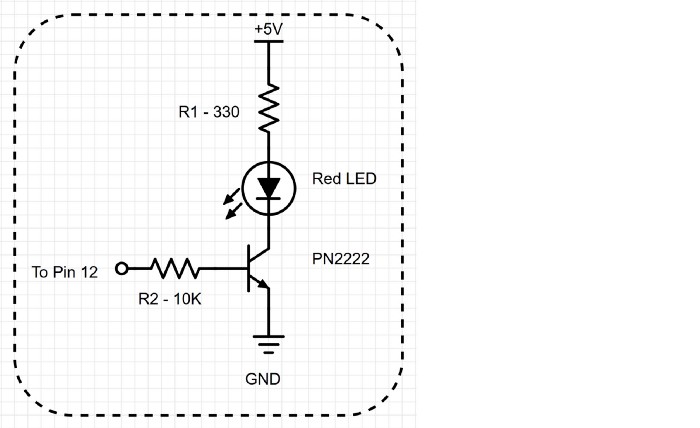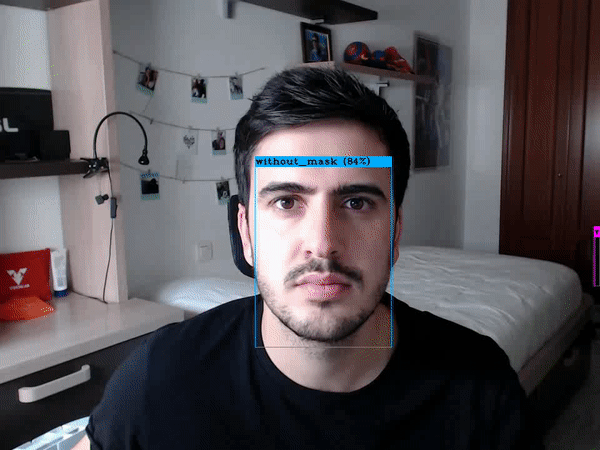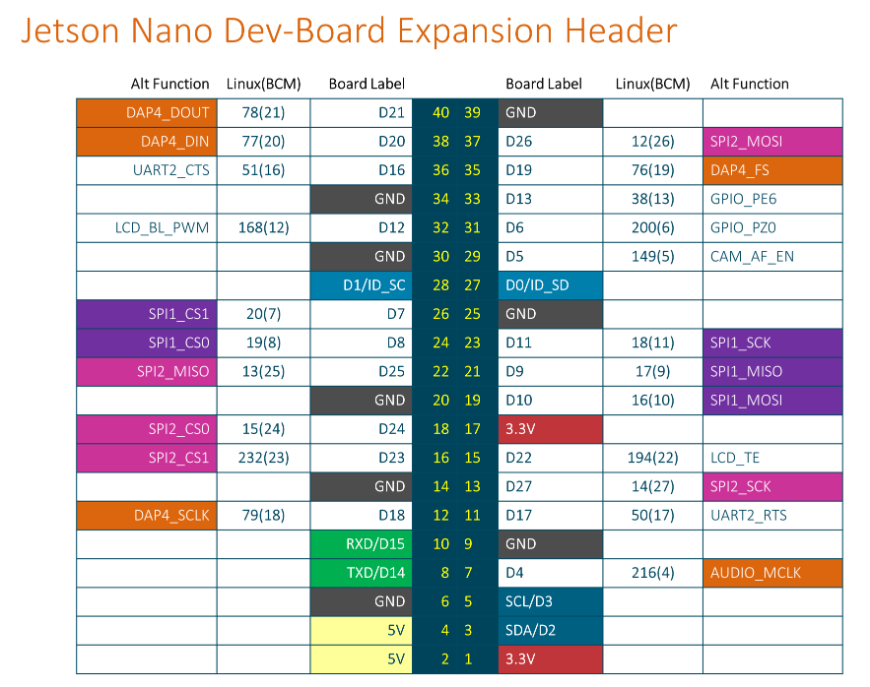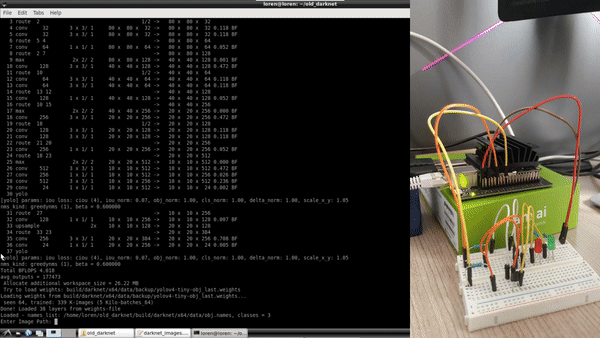This is a project for the Jetson Community and couldn't be possible without the effort of other developers. All the YoloV4 / Darknet code and documentation can be found here:
During the development of this project I use SSH, SCP and VNC Viewer for controlling and file-transfer from my PC to Jetson Nano board. You can control it directly from the board with a keyboard and mouse but this way is more unconfortable from my point of view:
- Setup VNC server on the Jetson developer kit
- How To Use SSH To Connect To A Remote Server In Linux Or Windows
- How to Use SCP Command to Securely Transfer Files
For this project I used the Kaggle's Face Mask Detection dataset with 853 images belonging to 3 classes. Each image has one or many bounding boxes.
The classes are:
- With mask
- Without mask
- Mask worn incorrectly
I recomend use Google Dataset Search to find any kind of dataset, in this case this dataset maybe its a bit small but I've got a good accuracy, if you want you can make it bigger with your own images or any other dataset.
Yolo needs an specific notation for train the model and .jpg file format, so first of all you have to go to images folder and run:
$> sudo apt-get install imagemagick
$> mogrify -format jpg *.png
Now with the images on jpg format next step is to parse .xml to yolo format and create train/test .txt files. Just drop the xml_to_yolo.py python script inside annotations folder and run it with:
$> python3 xml_to_yolo.py
If you haven't any library just install it with pip/pip3.
After that you will have one .txt per .xml file, train.txt and test.txt (These file has a split 90/10 of the total of bounding boxes).
All the YoloV4 code is develop by AlexeyAB/darknet, there you can find great documentation and examples about how to train, metrics, etc.
First of all you have to clone AlexeyAB repository
$ git clone https://github.com/AlexeyAB/darknet.git
$ cd darknet
Edit the Makefile with:
GPU=1
CUDNN=1
CUDNN_HALF=1
OPENCV=1
AVX=0
OPENMP=1
LIBSO=1
ZED_CAMERA=0
ZED_CAMERA_v2_8=0
......
USE_CPP=0
DEBUG=0
ARCH= -gencode arch=compute_53,code=[sm_53,compute_53]
......
NVCC=/usr/local/cuda/bin/nvcc
And run make:
$ make
After that the project is compiled and just need the trained weights to run it. I recommend to use Tiny-Yolo if you want a higher FPS performance. You can download both from AlexeyAB repository:
To run darknet just:
./darknet detector demo cfg/coco.data \
cfg/yolov4-tiny.cfg \
yolov4-tiny.weights \
-c 0
The -c 0 means using the camera (V4L2) device at /dev/video0.
To train a new YoloV4-Tiny model just follow AlexeyAB steps or use my files and .weights. It takes about 20 hours to finish the 6000 steps (2000x3 classes).
To run with my trainning:
./darknet detector demo cfg/obj.data \
cfg/yolov4-tiny-masks.cfg \
yolov4-tiny-obj_last.weights \
-c 0
To finish the project I wanted to use this detections to create "traffic lights", that's just a silly experiment but the possibilities are endless...
Once you have the model loaded you can run it from darknet_video.py or darknet_images.py, on this case I use darknet_images.py import RPi.GPIO as GPIO and added an if-else statement to control detections and set high-low values to the pins output.
The circuit I created if this one with 2 leds and 2 PN2222 transistors one for the green led and the other one for the red.

The pins are mapped this way:
pinGreen = 18 #Green led -> Pin 12 on the board
pinRed = 24 #Red led -> Pin 18 on the board
Thats an useful image to see how BCM maps works:
Live demo:


